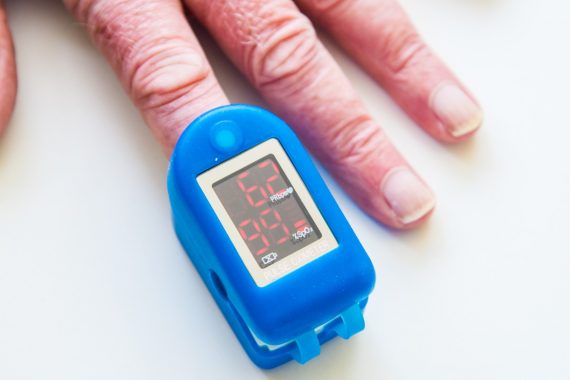Oximetry at home extended to all Covid patients who are not fully vaccinated

Eligibility for NHS England’s Covid ‘Oximetry @home’ scheme has been extended to all 16-64s testing positive for Covid who have not had both jabs.
Updated guidance said a ‘lighter touch pathway’ should be made available to the group, while eligibility criteria have also been widened for the main pathway – including to pregnant women.
Under the Covid ‘Oximetry @home’ scheme, those with symptoms measure their oxygen saturation levels with a pulse oximeter for practice monitoring.
The scheme, launched in November, asks patients to call their GP if their sats dropped to 93% or 94%.
Previously, the pathway was open to patients diagnosed with coronavirus clinically or by positive test result who are symptomatic and either over 65 or under 65 and ‘clinically extremely vulnerable’ to Covid.
But updated guidance published last week said that eligible under-65s now include those ‘at higher risk’ from Covid or ‘where clinical judgement applies considering individual risk factors such as pregnancy, learning disability, caring responsibilities and/or deprivation’.
It added that a ‘lighter touch’ version of the scheme ‘may be appropriate for the wider adult population’.
It said: ‘A lighter touch pathway should be available to any adult aged 18 – 64 that has tested positive and has not been double vaccinated.
‘This would include full self-management and escalation, without prompts. This should be agreed through a shared decision-making conversation.’
The guidance added that patients taking part in ‘Oximetry @home’ should receive either text, email or phone ‘check-ins’ or ‘support to self-manage and escalate’ as ‘agreed during onboarding’.
It remains unclear whether GPs will be required to identify, contact and onboard patients to the ‘lighter touch pathway’ and whether they will be required to monitor their oximetry results.
However, the guidance reiterated that the ‘default assumption’ is that the scheme is ‘primarily implemented in general practice’.
It added that funding to support this is ‘currently available through the Covid Capacity Expansion Fund’ – which is due to expire this month.
CCGs should ‘ensure’ that the service ‘remains available to support Covid-19 patients’, it said.
The document also expanded the list of providers that can refer to the pulse oximetry service to include ambulance services and maternity services.
It added that pregnant women referred to the service should ‘be advised to contact their midwife, maternity team or GP if their blood oxygen levels are dropping’.
If they record sats of 94% or less they ‘require clinical review and should be advised to attend their hospital immediately or call 999’, it said.
The guidance reiterated that those who show no signs of deterioration within 14 days of starting symptoms should be discharged but added that if symptoms become ‘chronic’ and extend beyond 12 weeks, GPs should consider referral to ‘post-Covid clinics’.
Meanwhile, the guidance said that while the MHRA has identified that skin colour can affect the ‘accuracy’ of pulse oximeters, the regulator is ‘not aware of any incidents where skin colour has had an adverse effect on the use of pulse oximeters when providing effective clinical care’.
It added: ‘Wherever possible it is recommended that patients record a baseline oxygen saturation at onboarding, and subsequent changes in saturation readings are then compared to this established baseline.’
Since December, GP practices have been able to request a ‘daily list’ of patients eligible for remote pulse oximetry monitoring.
In January, NHS England said that Covid patients across the country would be discharged ‘earlier’ for remote GP management with pulse oximetry.
Click to complete relevant respiratory CPD modules on Pulse Learning.
Visit Pulse Reference for details on 140 symptoms, including easily searchable symptoms and categories, offering you a free platform to check symptoms and receive potential diagnoses during consultations.
Related Articles
READERS' COMMENTS [1]
Please note, only GPs are permitted to add comments to articles










It’s all very well, but in demonstrating to a child on children’s ward how innocuous the finger monitor was, I discovered my ‘normal’ was 93% : I could get it up to 94% by hyperventilating, but felt faint before it reached 95%.
So if I got one, I would need to contact the GP just to tell them I was ‘my normal value’.